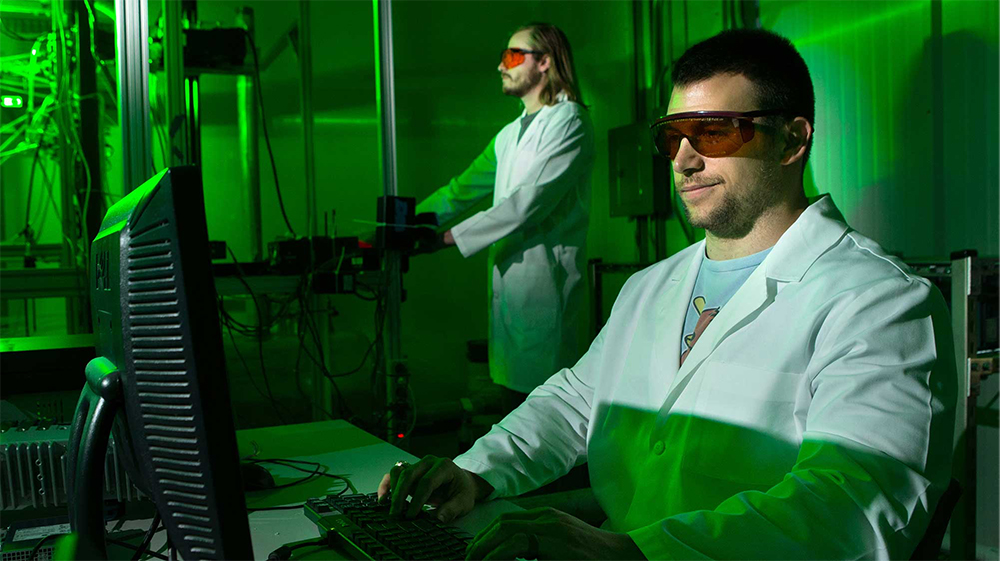
Nolan Goth, a nuclear engineering doctoral student, is working with the largest Matched Index of Refraction (MIR) wire-wrapped bundle in the world. The MIR bundle at the Texas A&M University Thermal Hydraulic Laboratory is significant because it is completely transparent, allowing Goth to explore new experimental techniques and conduct first-of-its-kind measurements.
In 2015, Goth began working on a Department of Energy joint venture project that brought together Texas A&M, Framatome, Argonne National Laboratory and Terra Power. The first phase split the group into two teams: Texas A&M and Framatome handled the experimental work, while Argonne and Terra Power did the computational work.
The sodium fast reactor was a popular reactor built in the United States in the ‘60s and ‘70s, but research and development slowed in the ‘80s. There is a renewed interest thanks to Terra Power, a private nuclear enterprise backed primarily by Bill Gates. “Part of this effort is advancing the Terra Power reactor design, so they can create their prototype,” said Goth.
“TerraPower, AREVA and Argonne National Laboratories have a strong interest in this new fuel design that will be potentially used in advanced fast reactors,” said Dr. Rodolfo Vaghetto, research assistant professor with the Department of Nuclear Engineering and the project investigator. “This research is a part of the work we do to ensure a new design goes from conceptual to something that you can actually build, operate safely and use to produce energy in a convenient way.”
Texas A&M’s isothermal experiment focused solely on how coolant flows around the fuel rods of a sodium fast reactor. Goth used the transparent bundle to provide high spatiotemporal resolution data for RANS- and LES-based simulation comparisons.
The transparent channel and rods allowed Goth to place tiny reflective particles inside of the coolant that matched the density of the fluid. The inserted particles were glass spheres coated in silver, making the particles highly reflective. Goth then used a green light laser and a photon detector to take pictures of the particles as they moved. After taking thousands of photos, Goth had enough data to calculate the velocity flow fields.
“Texas A&M is looking at fluid flow, velocity and pressure,” said Goth. “That may not seem like much, but it helps us size pumps in future plants, and gives us an idea of what power we can operate the reactor at without melting the fuel rods.”
The us Department of Energy selected Nolan Goth for a 2018 Innovations in Nuclear Technology R&D Award with his publication "Time-Resolved PIV/PTV Measurements on Interior Subchannels of a Wire-Wrapped 61-pin Hexagonal Fuel Bundle." The experiment will continue through 2020 and may include an open benchmark, which would share the newly discovered data with people all over the world.
Goth will graduate in December 2018 and hopes to work at a national laboratory or nuclear startup. “Being a part of this joint project has given me the opportunity to network with completely different companies,” said Goth. “I’ve developed skills here and I’m waiting to see who needs my skill set most. There are about 40 nuclear startups right now and it would be fun to be a part of something new.”